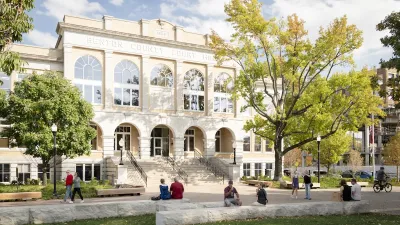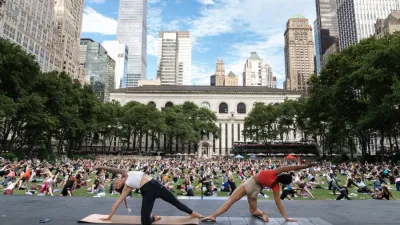Brookings has collected a year of data on an experiment it calls "transformative placemaking," with case studies from up and down the East Coast.

"By numerous measures, the Steel City is on the rise. But much of its growth and prosperity are concentrating downtown and in a handful of adjacent neighborhoods, while other neighborhoods—home primarily to people of color and high-poverty households—have yet to feel the lift," according to an article by Jennifer S. Vey and Hanna Love.
The example of Pittsburgh is cited as emblematic of similar dichotomies in other cities around the United States, and the raison d'être for a program established a year ago to address exactly these challenges. Vey and Love explain more:
One year ago this month, Brookings Metro dove into this fray with the establishment of the Bass Center for Transformative Placemaking. The impetus stemmed from the recognition that market disruptions, coupled with changing demographic and household structures, are sharpening the nation’s long-standing spatial divides—and that new sets of place-led policies and practices are essential to bridging them.
A year later, the team at the Bass Center is revealing an "outcome-oriented framework" for transformative placemaking.
The framework—meant to be adapted and refined to reflect community priorities and realities—is designed to provide stakeholders in urban, suburban, and rural areas with a holistic template for creating connected, vibrant, and inclusive communities.
According to the article, three attributes distinguish transformative placemaking from other forms of practice and public relations: scope, scale and level of integration. The article cites examples from Philadelphia, Memphis, and more to show examples of how this framework can be put into practice in different market and political environments.
FULL STORY: Transformative placemaking: A framework to create connected, vibrant, and inclusive communities

Alabama: Trump Terminates Settlements for Black Communities Harmed By Raw Sewage
Trump deemed the landmark civil rights agreement “illegal DEI and environmental justice policy.”

Planetizen Federal Action Tracker
A weekly monitor of how Trump’s orders and actions are impacting planners and planning in America.

The 120 Year Old Tiny Home Villages That Sheltered San Francisco’s Earthquake Refugees
More than a century ago, San Francisco mobilized to house thousands of residents displaced by the 1906 earthquake. Could their strategy offer a model for the present?

BLM To Rescind Public Lands Rule
The change will downgrade conservation, once again putting federal land at risk for mining and other extractive uses.

Indy Neighborhood Group Builds Temporary Multi-Use Path
Community members, aided in part by funding from the city, repurposed a vehicle lane to create a protected bike and pedestrian path for the summer season.

Congestion Pricing Drops Holland Tunnel Delays by 65 Percent
New York City’s contentious tolling program has yielded improved traffic and roughly $100 million in revenue for the MTA.
Urban Design for Planners 1: Software Tools
This six-course series explores essential urban design concepts using open source software and equips planners with the tools they need to participate fully in the urban design process.
Planning for Universal Design
Learn the tools for implementing Universal Design in planning regulations.
Clanton & Associates, Inc.
Jessamine County Fiscal Court
Institute for Housing and Urban Development Studies (IHS)
City of Grandview
Harvard GSD Executive Education
Toledo-Lucas County Plan Commissions
Salt Lake City
NYU Wagner Graduate School of Public Service





























